
In the shallow, sunlit waters of Noli, Italy there is an underwater garden. Not for seaweed, coral or any other aquatic growth. Instead, it's for strawberries, cherry tomatoes, basil and other herbs. All of it grown in air filled, inflatable bubble habitats suspended from the seafloor by cords, much like balloons.
It's a prototype for a very ambitious concept: To bring locally grown fruits, vegetables and herbs to parts of the world where surface conditions make it more expensive to farm those crops than doing so underwater. But how can that possibly be the case? What conditions could possibly make it more economical to farm underwater than on land?
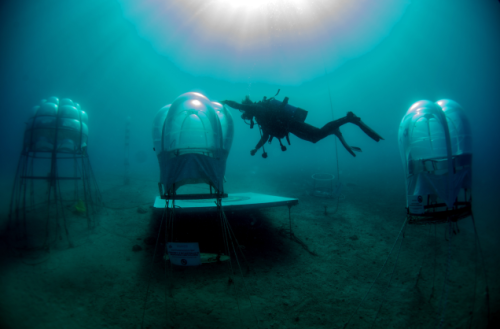
The Middle East. Plenty of arid, infertile desert. But also easy access to the ocean. Here, surface temperatures and lack of rain make farming very difficult. Indoor farming requires immense energy input for air conditioning, as well as plenty of fresh water, which must be desalinated at additional energy cost. But what if all that was free? Free cooling, free desalination, and to top it off, protection from all pests without the use of pesticide.
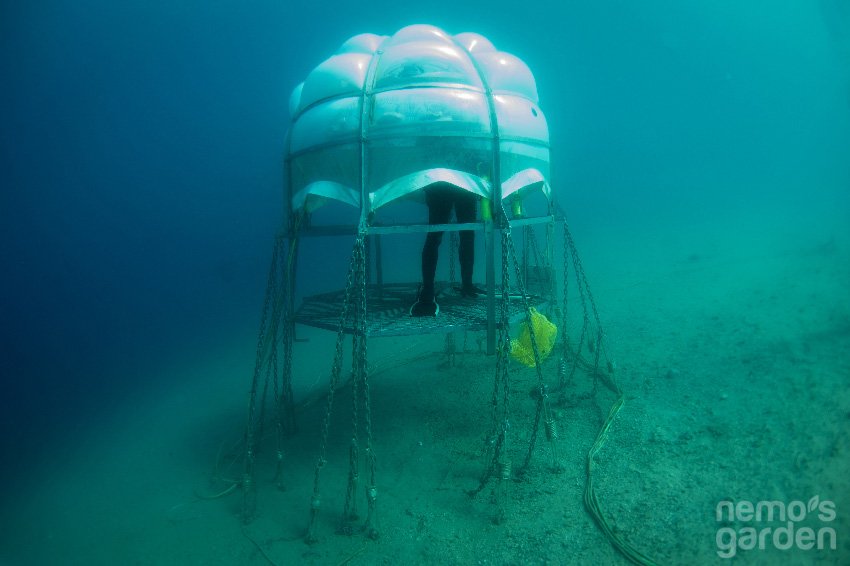
As it turns out, there is a depth in the ocean in especially hot countries where, relative to the surface, the temperature is just right for plants from cooler regions. The temperature is also very stable at any given depth underwater as the ocean is one gigantic heatsink.
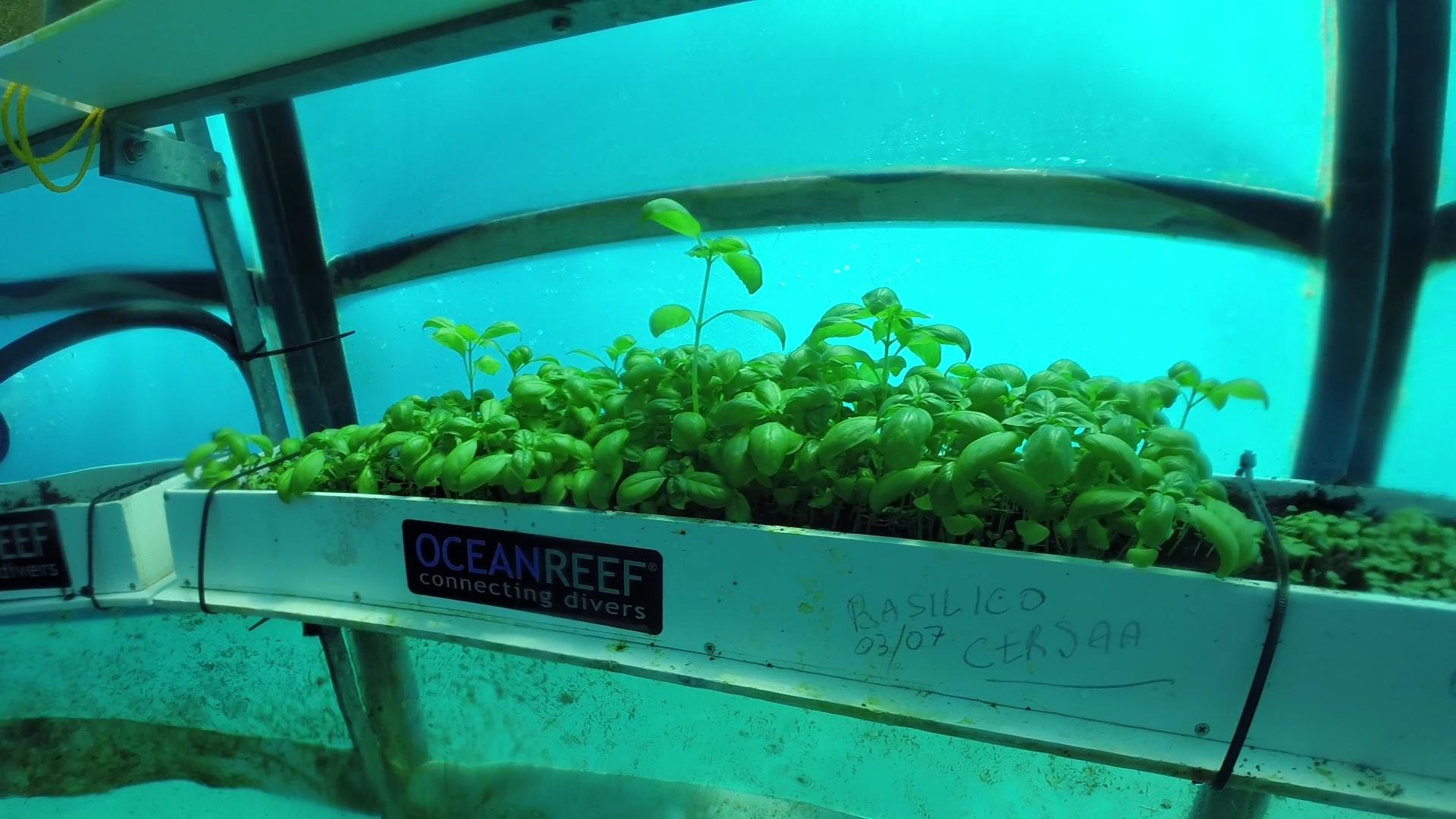
Desalination occurs passively. Water evaporates into the air, making it humid. But that evaporated water doesn't have any salt in it! It collects on the inner surface of the bubble and runs down to troughs which redirect it to the plants. Presto, free fresh water from the ocean without any energy input.
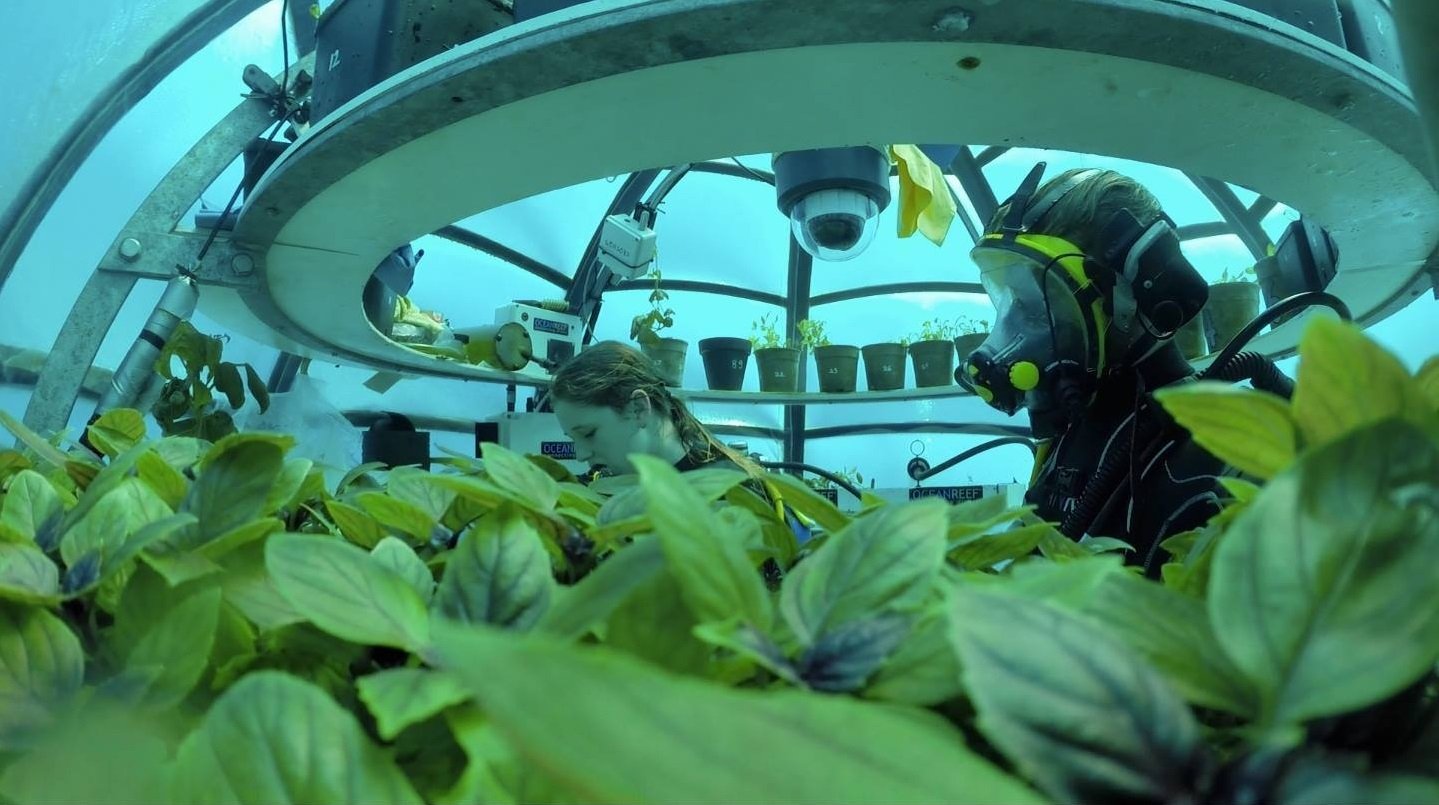
But what about life support, you ask? Also free. The surface of water behaves very much like a lung, dissolving O2 out of air into the water (how fish get O2 to breathe) and vice versa, depending on whether there is a chemical differential. If the air is O2 deficient, more O2 outgasses from the water. If it has an excess of CO2, it's absorbed into the water, which has less by comparison.
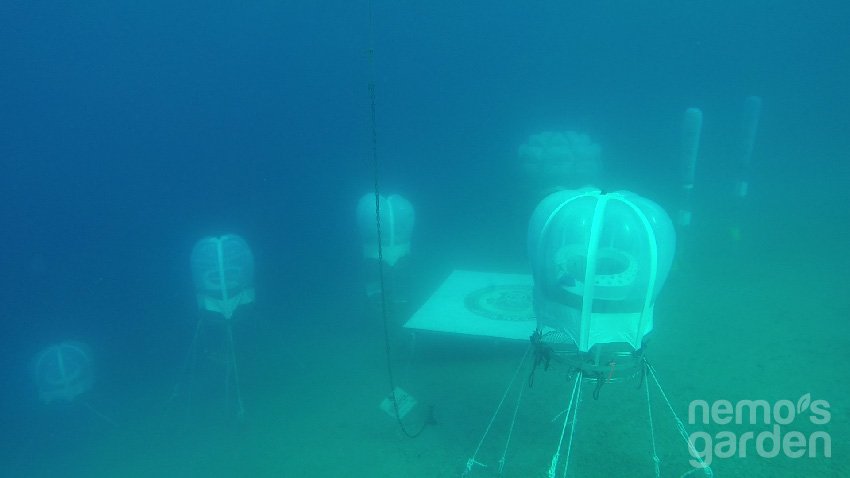
This is how our whole planet's life support system works. Plants contribute, but are a smaller part of it than the ocean. These passive systems all provide the necessities of life for edible crops grown in various bubble habitats, most of them only large enough for one person to stand up inside of from the waist up, as well as two larger ones which can accommodate two or three people at the same time.
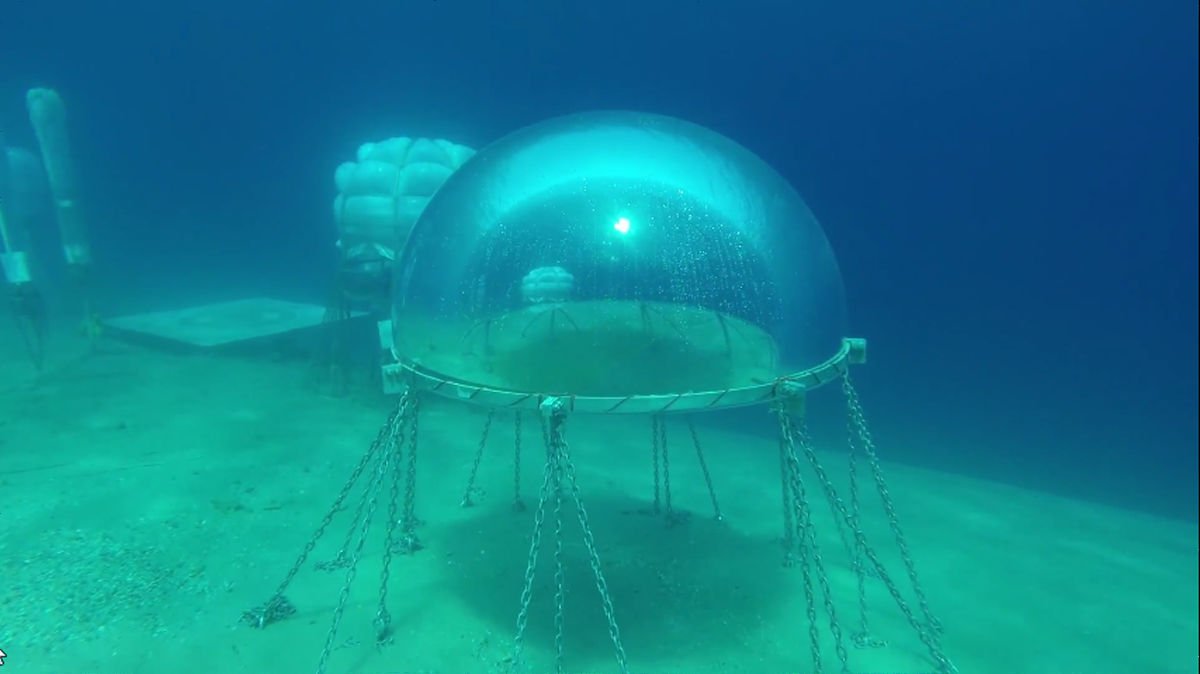
A fully transparent diver's shelter and observatory overlooks the garden in which project managers can supervise planting and harvesting. Little more than a waist-up diving bell today, but perhaps a full habitat like Aquarius soon in which the teams that maintain these gardens can eat, sleep, bathe, use the bathroom, and carry out the other functions of day to day living without needing to return to the surface. The farmhouse of the future?

Sergio and Luca Gamberini, masterminds of the Nemo Project, are far from finished. Pending data collected from the trial site, similar gardens will be constructed in regions of the world with the conditions that permit such a farm to operate at a profit. Dubai for example, where locals are wealthy and will pay more for fresh, locally grown produce. Or Saudi Arabia.
But as the planet warms and the sea level rises, the conditions Nemo's Garden is designed for may become commonplace further and further from the equator. Your great, great grandchildren's diet may well include greens that were once grown on land, but which by then will more commonly come from seafloor farms like Nemo's Garden.

